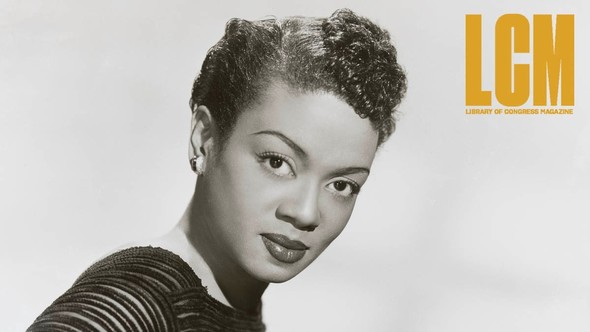Search Results for children's
Links
Keys for Kids Ministries is a children's ministry organization, offering Keys for Kids, Down Gilead Lane, and much more.
|
Discount homeschool curriculum and educational materials.
|
Books, software, video and audio tapes: Arabic/Islamic
|
Publishers of History Through Literature Study Guides and classic children's literature, including Newbery and Caldecott award-winners. Emphasize use of
|
Parents can teach their younger students through the delightful avenue of quality children's literature.
|
News
If you have been considering homeschooling, let that public school indoctrinated peer pressure kick in...
From WND:ÂÂ
A homeschooling movement is sweeping the nation – with 1.5 million children now learning at home, an increase of 75 percent since 1999.
The Department of Education's National Center for Education Statistics reported homeschooling has risen by 36 percent in just the last five years.
"There's no reason to believe it would not keep going up," NCES statistician Gail Mulligan told USA Today.
A 2007 survey asked parents why they choose to homeschool and allowed them to provide several reasons. The following are the most popular responses:
Concern about the school environment, including reasons such as safety, drugs or negative peer pressure – 88 percent
A desire to provide religious or moral instruction – 83 percent
A dissatisfaction with academic instruction at other schools – 73 percent
Nontraditional approach to children's education – or "unschoolers" who consider typical curriculums and standardized testing as counterproductive to quality education – 65 percent
Other reasons, such as family time, finances, travel and distance – 32 percent
Child has special needs (other than physical or mental health problems) that schools cannot or will not meet – 21 percent
Child has a physical or mental health problem – 11 percent
Parents who report that they homeschool to provide religious or moral instruction increased from 72 percent to 83 percent from 2003 to 2007.
Above all other responses, parents cited providing religious and moral instruction as the most important factor in the decision to teach their children at home (36 percent). The second most important issue was concern about the school environment (21 percent), while the third reason was dissatisfaction with academic instruction at other schools (17 percent).
Research has shown the positive effects of homeschooling through the years. While some critics say teaching children at home may stunt their social growth, studies indicate homeschooled students fare well or better than public and private school students in terms of social, emotional and psychological development.
Additionally, homeschoolers earn higher marks than peers who attend public schools. Academic Leadership, an online journal, cites findings from at least three nationwide studies across the United States and two nationwide studies in Canada.
"The home educated in grades K to 12 have scored, on average, at the 65th to 80th percentile on standardized academic achievement tests in the United States and Canada, compared to the public school average of the 50th percentile," it states.
Three studies also show that demographics, income and education level of homeschooling parents are generally irrelevant with regard to quality of education in a home setting. On average, homeschoolers in low-income families with less formal education still score higher than state-school averages.
|
Well, you thought that cell phone would keep your kid safe if there was another school shooting. Who knew the shots would actually be homemade porn made with that very same cell phone?!?
 File this under the complete pornification of our society.ÂÂ
What's an awkward teen boy do to get a date now? He sends a girl a picture of his junk.
Parents, can I speak frankly here? If you are not considering homeschooling, you are completely nuts.
From the Cincinnati Enquirer:
Teens here are taking nude photos of themselves or others, sending them on their cell phones or posting them online.
Some teens do it as a joke.
For others, it's the new bold pickup line to get a date.
A year ago, a 19-year-old Goshen cheerleading coach was charged and prosecuted for a misdemeanor, contributing to the unruliness of a child, for taking a topless photo of herself and a 15-year-old girl. A Glen Este Middle School boy was taken to juvenile court during the last school year for taking explicit photos of his girlfriend.
The National Campaign to Prevent Teen and Unplanned Pregnancy and CosmoGirl.com last month revealed results of a study that showed 20 percent of teens say they have sent or posted nude or semi-nude pictures or video of themselves.
The results don't surprise local teens, school officials, police officers and others.
"If I were to go through the cell phones in this building right now of 1,500 students, I would venture to say that half to two-thirds have indecent photos, either of themselves or somebody else in school," said Jim Brown, school resource officer at Glen Este High School.
Turpin High School Principal Peggy Johnson thinks that the results would be similar - about 50-50 - in her building.
According to the national study, most teens who send sexually suggestive content send to boyfriends or girlfriends, while others say they send such material to those they want to date or hook up with or to someone they only know online.
Brown, who also is Glen Este Middle School's resource officer, said of the 14-year-old boy's cell phone photos last year: "They were as graphic as you would see in any Penthouse magazine, I've been told."
The study also showed that 44 percent of teens say it's common for sexually explicit images and text messages - sexting - to be shared with people other than the intended recipient.
"Guys who get pictures like this from girls, I don't think girls understand that guys gossip way more than girls," said Taylor McCleod, 17, a Withrow University High School senior who is a teen leader for the Postponing Sexual Involvement program.
"And when a guy gets a picture like that, he's not just going to keep it between him and the girl. He's going to take that and show every guy that he knows that knows that girl. And every time somebody looks at her, it's going to be a loss of respect for her."
The stakes of taking and sending sexually explicit photos can be high, compared to the thrill at the time.
The consequences can range from humiliation to losing out on jobs to going to court.
When kids are 14 or 15, Brown said, they don't often make the right decisions.
"They think, 'I have the right to decide what's best for me.' The next thing you know, it's on YouTube, and you become an international star because you're exposing part of your body. ... Then, they want to retrieve their good reputation, and they can't."
Kids have lost scholarships and jobs because of what's posted on Web sites, Brown said.
Many kids have "wised up," taking photos of body parts, but not faces, to avoid detection.
And while some teens intend for the suggestive photos to be seen by only one person, they might not think those photos will be forwarded or that something posted on the Internet lives on.
"I don't think it even crosses their mind," Daniel "Woody" Breyer, chief deputy prosecutor in Clermont County, said. "I think that kids are in the moment. What's going to happen today? What are we doing tonight? What are we doing this weekend?"
Going to court might not cross their minds, either.
Prosecutors evaluate the intent of the photo when deciding if charges are warranted.
"If this is clearly just a joke and everyone involved thinks it's funny, now somebody's mom sees it and gets mad. Technically, a charge could be filed," said Julie Wilson, chief assistant prosecutor and public information officer for the Hamilton County Prosecutor's Office.
"We're asking police to evaluate if it's a criminal charge or a matter that could be handled by the school or parents. For whatever reason, we have not seen a lot of these cases."
With so many implications, why do kids do it?
Besides peer pressure, the practice is provoked by what's considered acceptable in this culture, Breyer said, citing videos, such as "Girls Gone Wild."
"What is acceptable behavior in our country has just gone through the floor," Breyer said.
Christopher Kraus, director of the Postponing Sexual Involvement program at Cincinnati Children's Hospital Medical Center, said that in his 20 years of working in adolescent medicine at the hospital, he's yet to see a teenage trend that does not mirror a larger adult trend.
"Adolescent sexuality is part of normal human development," Kraus said. "Teens are trying to figure out how to express their sexuality appropriately. They are learning, and they are learning from adults."
Kraus, who also is project manager for the Ohio Department of Health's new Guidelines for Sexual Health and Adoption Education, Grades 7-12, said teens are learning how to sort out many sexual messages in the media, including text messages.
"Some messages are complimentary. Some are offensive. Some are confusing. Each message is different."
'Kids Gone Wild'
Another teen Postponing Sexual Involvement leader, Mariah McCollum, who has received unwanted and unsolicited photos from an acquaintance, talked about the trend.
"Every day or every other day, I hear about a new video of one of my peers. There's a new video going around involving sexual activities," said Mariah, a 17-year-old senior at Withrow University High School.
"I think it's pretty lame for a male to send you pictures without consent. ... Who says I want to see your private areas?" Mariah said, adding that she lost a lot of respect for the boy who sent it.
Meanwhile, Brown said parents need to pay attention to their kids' use of technology.
Part of the problem is that kids' inhibitions are knocked away by alcohol-fueled parties, where many sexually explicit photo opportunities occur, he said.
"It's 'Kids Gone Wild,' with technology being provided by the parents," he said.
File this under the complete pornification of our society.ÂÂ
What's an awkward teen boy do to get a date now? He sends a girl a picture of his junk.
Parents, can I speak frankly here? If you are not considering homeschooling, you are completely nuts.
From the Cincinnati Enquirer:
Teens here are taking nude photos of themselves or others, sending them on their cell phones or posting them online.
Some teens do it as a joke.
For others, it's the new bold pickup line to get a date.
A year ago, a 19-year-old Goshen cheerleading coach was charged and prosecuted for a misdemeanor, contributing to the unruliness of a child, for taking a topless photo of herself and a 15-year-old girl. A Glen Este Middle School boy was taken to juvenile court during the last school year for taking explicit photos of his girlfriend.
The National Campaign to Prevent Teen and Unplanned Pregnancy and CosmoGirl.com last month revealed results of a study that showed 20 percent of teens say they have sent or posted nude or semi-nude pictures or video of themselves.
The results don't surprise local teens, school officials, police officers and others.
"If I were to go through the cell phones in this building right now of 1,500 students, I would venture to say that half to two-thirds have indecent photos, either of themselves or somebody else in school," said Jim Brown, school resource officer at Glen Este High School.
Turpin High School Principal Peggy Johnson thinks that the results would be similar - about 50-50 - in her building.
According to the national study, most teens who send sexually suggestive content send to boyfriends or girlfriends, while others say they send such material to those they want to date or hook up with or to someone they only know online.
Brown, who also is Glen Este Middle School's resource officer, said of the 14-year-old boy's cell phone photos last year: "They were as graphic as you would see in any Penthouse magazine, I've been told."
The study also showed that 44 percent of teens say it's common for sexually explicit images and text messages - sexting - to be shared with people other than the intended recipient.
"Guys who get pictures like this from girls, I don't think girls understand that guys gossip way more than girls," said Taylor McCleod, 17, a Withrow University High School senior who is a teen leader for the Postponing Sexual Involvement program.
"And when a guy gets a picture like that, he's not just going to keep it between him and the girl. He's going to take that and show every guy that he knows that knows that girl. And every time somebody looks at her, it's going to be a loss of respect for her."
The stakes of taking and sending sexually explicit photos can be high, compared to the thrill at the time.
The consequences can range from humiliation to losing out on jobs to going to court.
When kids are 14 or 15, Brown said, they don't often make the right decisions.
"They think, 'I have the right to decide what's best for me.' The next thing you know, it's on YouTube, and you become an international star because you're exposing part of your body. ... Then, they want to retrieve their good reputation, and they can't."
Kids have lost scholarships and jobs because of what's posted on Web sites, Brown said.
Many kids have "wised up," taking photos of body parts, but not faces, to avoid detection.
And while some teens intend for the suggestive photos to be seen by only one person, they might not think those photos will be forwarded or that something posted on the Internet lives on.
"I don't think it even crosses their mind," Daniel "Woody" Breyer, chief deputy prosecutor in Clermont County, said. "I think that kids are in the moment. What's going to happen today? What are we doing tonight? What are we doing this weekend?"
Going to court might not cross their minds, either.
Prosecutors evaluate the intent of the photo when deciding if charges are warranted.
"If this is clearly just a joke and everyone involved thinks it's funny, now somebody's mom sees it and gets mad. Technically, a charge could be filed," said Julie Wilson, chief assistant prosecutor and public information officer for the Hamilton County Prosecutor's Office.
"We're asking police to evaluate if it's a criminal charge or a matter that could be handled by the school or parents. For whatever reason, we have not seen a lot of these cases."
With so many implications, why do kids do it?
Besides peer pressure, the practice is provoked by what's considered acceptable in this culture, Breyer said, citing videos, such as "Girls Gone Wild."
"What is acceptable behavior in our country has just gone through the floor," Breyer said.
Christopher Kraus, director of the Postponing Sexual Involvement program at Cincinnati Children's Hospital Medical Center, said that in his 20 years of working in adolescent medicine at the hospital, he's yet to see a teenage trend that does not mirror a larger adult trend.
"Adolescent sexuality is part of normal human development," Kraus said. "Teens are trying to figure out how to express their sexuality appropriately. They are learning, and they are learning from adults."
Kraus, who also is project manager for the Ohio Department of Health's new Guidelines for Sexual Health and Adoption Education, Grades 7-12, said teens are learning how to sort out many sexual messages in the media, including text messages.
"Some messages are complimentary. Some are offensive. Some are confusing. Each message is different."
'Kids Gone Wild'
Another teen Postponing Sexual Involvement leader, Mariah McCollum, who has received unwanted and unsolicited photos from an acquaintance, talked about the trend.
"Every day or every other day, I hear about a new video of one of my peers. There's a new video going around involving sexual activities," said Mariah, a 17-year-old senior at Withrow University High School.
"I think it's pretty lame for a male to send you pictures without consent. ... Who says I want to see your private areas?" Mariah said, adding that she lost a lot of respect for the boy who sent it.
Meanwhile, Brown said parents need to pay attention to their kids' use of technology.
Part of the problem is that kids' inhibitions are knocked away by alcohol-fueled parties, where many sexually explicit photo opportunities occur, he said.
"It's 'Kids Gone Wild,' with technology being provided by the parents," he said.
|
I am not a big fan of structured curriculum, preferring instead thought-provoking tools for children to use at their own pace. This list of Things to Buy Instead of Curriculum is a great list of ways to invest your money that will pay dividends in your children's love of learning.
|
News from the Library of CongressLionel Richie, the Kitchen Sisters, New Online Collections & More
 Lionel Richie to Receive the Gershwin Prize for Popular SongLibrarian of Congress Carla Hayden announced that pop music icon Lionel Richie will be the next recipient of the Library of Congress Gershwin Prize for Popular Song. Richie will be honored with an all-star tribute concert in Washington, D.C., that will be broadcast nationally on PBS stations May 17 at 9 p.m. ET.Learn more. Lionel Richie to Receive the Gershwin Prize for Popular SongLibrarian of Congress Carla Hayden announced that pop music icon Lionel Richie will be the next recipient of the Library of Congress Gershwin Prize for Popular Song. Richie will be honored with an all-star tribute concert in Washington, D.C., that will be broadcast nationally on PBS stations May 17 at 9 p.m. ET.Learn more.  The Library Acquires Kitchen Sisters' Audio ArchiveFor more than 40 years, radio and podcast producers Davia Nelson and Nikki Silva — best known as? The Kitchen Sisters — have chronicled the lives, rituals, triumphs and tribulations of people from all walks of life, weaving together a rich tapestry of America's cultural heritage. Now the Library of Congress is acquiring their full body of work, including more than 7,000 hours of audio, photos, handwritten journals, podcasts and storybooks.Learn more. New Collections OnlineThe Library is constantly adding new items to its available digital collections online. Check out this post from The Signal blog for the latest additions, from film descriptions from copyright registrations to rare illustrated children's books in Hebrew and Yiddish, to musical theater sheet music, to maps, and more.Read the blog post. The Library Acquires Kitchen Sisters' Audio ArchiveFor more than 40 years, radio and podcast producers Davia Nelson and Nikki Silva — best known as? The Kitchen Sisters — have chronicled the lives, rituals, triumphs and tribulations of people from all walks of life, weaving together a rich tapestry of America's cultural heritage. Now the Library of Congress is acquiring their full body of work, including more than 7,000 hours of audio, photos, handwritten journals, podcasts and storybooks.Learn more. New Collections OnlineThe Library is constantly adding new items to its available digital collections online. Check out this post from The Signal blog for the latest additions, from film descriptions from copyright registrations to rare illustrated children's books in Hebrew and Yiddish, to musical theater sheet music, to maps, and more.Read the blog post.  New Magazine: Jazz's Last StarHazel Scott had fame, money and artistic success — then she lost it all. Read about this little-known jazz star and discover a world of jazz from the Library's collections in the new issue of the Library of Congress MagazineRead the new issue. New Magazine: Jazz's Last StarHazel Scott had fame, money and artistic success — then she lost it all. Read about this little-known jazz star and discover a world of jazz from the Library's collections in the new issue of the Library of Congress MagazineRead the new issue. Friends of the Library of Congress brings together a community of donors committed to preserving this nation's cultural memory. This group is integral in advancing the Library's mission to engage, inspire, and inform and help make everything possible from digital resources to public programming to exhibitions.Join now and take part in unique opportunities to see, experience, and learn from the Library's staff and collections first-hand. Friends of the Library of Congress brings together a community of donors committed to preserving this nation's cultural memory. This group is integral in advancing the Library's mission to engage, inspire, and inform and help make everything possible from digital resources to public programming to exhibitions.Join now and take part in unique opportunities to see, experience, and learn from the Library's staff and collections first-hand. |
An interactive, hands on South African unit study based on the classic African children's story, Fly, Eagle, Fly.
|



 Links
Links  Articles
Articles  Blogs
Blogs  Videos
Videos  News
News  Colors
Colors 

 New links
New links
